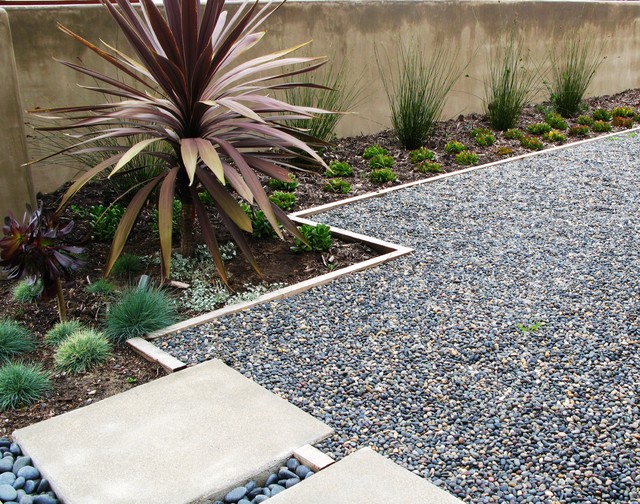9 Easy Facts About Landscapers Explained
Wiki Article
How Landscapers can Save You Time, Stress, and Money.
Table of ContentsAbout LandscapersA Biased View of LandscapersSome Known Details About Landscapers The Best Strategy To Use For LandscapersA Biased View of Landscapers
- A tree or bush (shrub) that sheds its fallen leaves in winter months. In the PNW there are semi-deciduous or semi-evergreen plants that may shed their leaves depending upon exactly how cold the wintertime is. Abelia and some hebe are great examples. Landscapers. - A flat gathering area, made from wood or composite material (made to resemble timber), normally adjacent or connected to a structure.

- Granite that is weathered to the factor that it is a really fine aggregate. This is a natural procedure, and the outcome can be used for courses and outdoor patios. Disintegrated granite is commonly referred to as DG. It is especially valuable in modern landscapes. - Key landscape attributes being proposed in a landscape style strategy.
See This Report about Landscapers
These objectives lead the design process, not the developer's style or preferences. Common design goals in Rose city are reduced maintenance, drought forgiving, and animal pleasant. - Process for getting rid of or thinning the dead reduced degree of a fully grown lawn. Thatch is lawn that has died and collected listed below the green blades.
Over time this layer can obtain extremely thick and make it difficult for water, sun, and nutrients to obtain to parts of the grass.- The process of gathering and managing the circulation of water on a home. This can be performed with grading, French drains, completely dry wells, permeable surface areas, sump pump, rainfall gardens, and much more.
- A sluggish feeding irrigation system that utilizes adaptable tubing and emitters to send out an exact quantity of water to each plant. - The capability of a plant to make it through without much summer water.
- A garden feature where water is stood for by an aggregate rock item, usually a crushed rock or granite. These are most frequently found in contemporary and Japanese yard style.- A stone or natural flagstone patio area, path, or pathway developed without a concrete base. The base would certainly be compacted crushed rock and the joints would be an aggregate or walkable ground cover.
7 Easy Facts About Landscapers Described
- A rock maintaining or cost-free standing wall built without making use of mortar. A very competent mason is needed for a completely dry pile rock wall. Many walls in Rose city are moist stacked, also if they seem. - An underground framework that look at this website collect water and enables it to slow percolate right into the soil around it.
Landscape layout that works with a websites' atmosphere in both appearance and sustainability without negative impacts to the environment. Bordering in the landscape is a line of separation that produces aesthetic rate of interest in the garden by separating one sector from another segment. This can be visual or useful, keeping one element (such as pea gravel) from obtaining combined into one more (like bark dirt).
Locations can also have a feeling of "room" offered by trees, various other growings, fences, or screens. The landscape near the entrance to a building. A tree, shrub or vine, trained to expand on a wall or fencing into a particular pattern. Specifically helpful for fruit trees, making it simple to gather the fruit and consisting of mess.
A plant that is not click here for info native to the place where it will certainly be grown. Thicker bladed lawn lawn that spread out by means of rhizomes.: The degree of soil on your property prior to bark dust or compost is spread out.
The Ultimate Guide To Landscapers

The function, factor, or action that an area is be landscaped for. Room for growing plants for viewing, eating, or physical activity.
Reduced plants that are enabled or urged to spread over an area. Can refer to any type of "difficult" yard elements including statuary or rocks yet many frequently is used to refer to courses, patio areas, and walls.: Height distinction between the degree of water in a pond (or the degree of the pump if it rests outside the fish pond) and the top electrical outlet of water which affects performance of the water pump in gph (gallons per hour).

The Definitive Guide for Landscapers
Conventional PNW landscapes are casual. A plant that spreads more than desired, or right into habitats where it does damages.Can include head placements and coverage, pipeline sizing, GPM specs, and products needed to mount this why not try these out system. Accredited specialist who develops landscapes, educated in engineering and style as well as in gardening.
The professional that plans and creates landscape jobs, typically at a residential or small industrial degree with the significant design inspiration on growings. Landscape designers typically have much less education than Landscape Architects and are not accredited. A completed landscape layout, describing all elements for the brand-new landscape. This typically takes the type of an illustration theoretically.
Calcium product utilized to raise the pH in dirt, which will certainly make it less congenial to moss. A water tight HDPE product utilized beneath fish ponds, streams and waterfalls in water features. Making use of several plantings of the exact same selection to load in an area in the landscape. This can lower maintenance and water use in the garden.
Report this wiki page